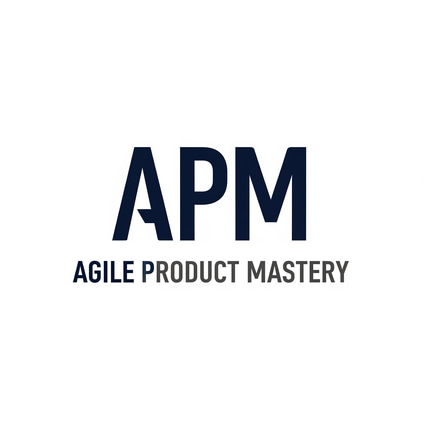From Insight to Action: How AI Is Supercharging Agile Product Delivery
Discover how AI is transforming agile product delivery—boosting team velocity, backlog management, and data-driven decision-making for Product Owners.
AGILE PRODUCT MANAGEMENTAGILE PRODUCT DEVELOPMENTDIGITAL TRANSFORMATION
Written by: Matt Gregory - Founder Agile Product Mastery
6/4/20254 min read


From Insight to Action: How AI Is Supercharging Agile Product Delivery
In the first post of our AI + APM series, we explored the rise of AI in product management and what every Agile leader needs to know. Now, let’s zoom in on where AI is making the most immediate impact — day-to-day agile delivery.
From backlog management to sprint forecasting, the introduction of artificial intelligence into agile workflows is more than a trend — it’s a competitive edge. Agile Product Owners (POs) and teams who adopt AI tools effectively are seeing dramatic boosts in velocity, clarity, and decision-making quality.
Let’s explore how to go from insight to action by using AI to elevate your agile delivery game.
1. Smarter Backlog Prioritization
One of the most tedious—and crucial—tasks for a Product Owner is prioritizing the product backlog. Enter AI.
How AI Helps:
• Value Scoring: Tools like Craft.io and airfocus use AI to help you score features by business impact, technical effort, and user demand.
• Sentiment Analysis: AI can analyze user feedback (from reviews, tickets, surveys) to surface recurring themes and user pain points.
• Pattern Recognition: AI can detect which backlog items are constantly deprioritized or misunderstood and flag them for refinement.
APM Tip: Use AI tools to group backlog items by predicted ROI or effort vs. impact. This can fuel better stakeholder discussions and sprint planning decisions.
2. Faster, Data-Driven Sprint Planning
Sprint planning can sometimes feel like a guessing game. AI adds precision.
Key Benefits:
• Velocity Forecasting: AI tools like Jira Advanced Roadmaps and Forecast analyze team performance history to suggest sprint scope.
• Workload Balancing: AI can help assess team capacity, flag bottlenecks, and recommend optimal task assignments.
• Risk Detection: Based on past sprints, AI can warn you if certain tasks tend to overrun or trigger bugs.
APM Tip: Don’t just rely on gut feel. Use AI to simulate “what-if” sprint planning scenarios to test backlog combinations before committing.
3. Real-Time Team Health and Engagement Monitoring
Happy teams deliver better products. But how do you really know how your team is doing?
AI + Agile People Analytics:
• Sentiment AI can analyze Slack or MS Teams communications to detect stress, confusion, or burnout trends.
• Tools like Officevibe, Lattice, and TeamRetro use machine learning to analyze retrospective feedback and engagement scores.
Instead of quarterly surveys, you get weekly pulse checks on morale, collaboration, and alignment.
APM Tip: Share anonymized health trends in retrospectives and co-create improvements. Use AI as a conversation starter—not a surveillance tool.
4. Instant User Insight for Agile Decisions
One challenge many POs face is distilling large volumes of qualitative user feedback into actionable product insights.
How AI Solves This:
• NLP (Natural Language Processing) scrapes and analyzes data from support tickets, NPS comments, app reviews, and community forums.
• AI tools like Dovetail, Productboard, and Hotjar AI summarize feedback themes and correlate them to product areas.
This means POs spend less time reading raw data and more time making decisions that move the needle.
APM Tip: Use AI to prioritize discovery interviews based on emergent patterns in feedback data. Let machines show you what humans care about.
5. Smarter Decision-Making in Product Trade-Offs
AI brings clarity when you’re stuck between multiple directions.
Examples:
• Should we ship Feature A that users love or Feature B that reduces churn?
• Which technical debt issue is most likely to hurt velocity in the next 6 months?
Modern AI platforms can model scenarios, simulate risk, and highlight downstream effects of each option.
Tools like Genei, Fermat, and Notion AI can also summarize stakeholder input to help you make well-informed, balanced trade-offs.
APM Tip: Use AI tools to prepare stakeholder presentations with modeled trade-off scenarios. Show not just “what” but “why” behind each roadmap choice.
6. Proactive Dependency and Risk Management
AI is also great at spotting risks before they derail delivery.
• Dependency Mapping: AI can analyze epics and stories across teams and suggest hidden dependencies.
• Delay Prediction: Based on past cycle times and team history, some tools can predict which initiatives are likely to slip.
APM Tip: During PI or quarterly planning, let AI flag conflicting initiatives across teams—before the risks go live.
7. AI-Enhanced Agile Ceremonies
Even agile rituals are getting AI support.
• Standups: Tools like Range and Geekbot use AI to analyze daily updates and surface blockers.
• Retrospectives: Platforms like Parabol use AI to group feedback and suggest action items.
• Demo Scripts: Tools like Jasper or Gamma help auto-generate scripts for demos based on backlog items delivered.
APM Tip: Leverage AI to extract insights from ceremonies — e.g., highlight recurring blockers or high-value sprint wins in dashboards.
Caution: AI Can’t Replace Agile Judgment
AI augments. It does not replace.
There are still product trade-offs that require human empathy, domain experience, and strategic vision. AI can inform decisions, but it can’t own them.
Your job as a Product Owner is to ask better questions and make sharper calls with AI as your co-pilot.
Final Thoughts: APM Is Now Augmented Product Mastery
Agile Product Management is evolving from gut-feel prioritization and sticky notes to data-informed, AI-augmented decision-making.
When used intentionally, AI helps you:
• Clarify what matters most
• Act faster with confidence
• Lead your team with clarity
The goal isn’t to automate the human out of the loop. It’s to amplify your impact as a strategic product leader.
Next in the Series (Part 3):
We’ll explore real-world case studies of AI-powered Agile teams, tools you can adopt today, and how to upskill for the AI-driven future of product leadership.
Want to go deeper? Join our community for regular insights, tools, and tips tailored for Business Product Owners.
© Agile Product Mastery — Build a career that scales. Not one that burns out.
Powered by Baltimore Advisory Pty Ltd — ABN 97 678 312 475 — All rights reserved
Follow us on LinkedIn
